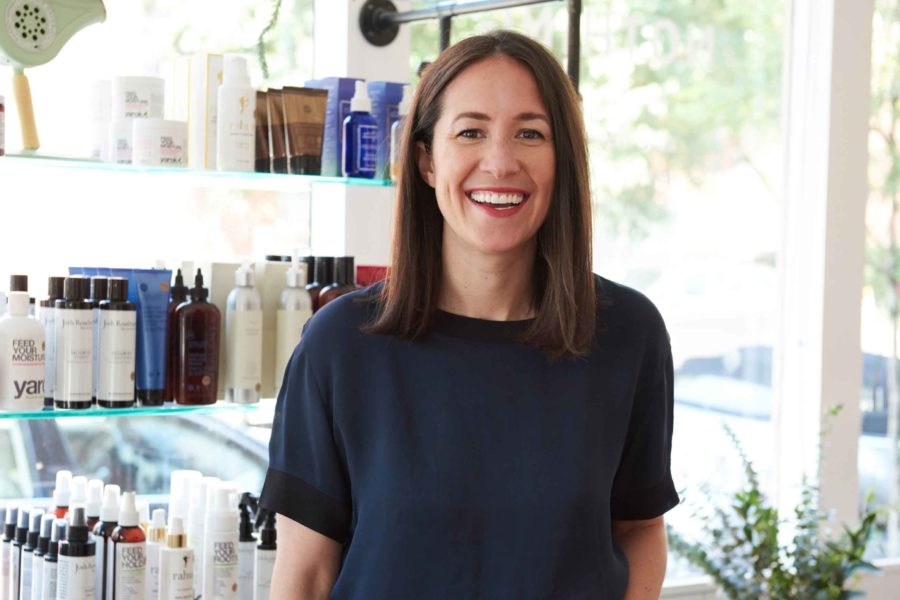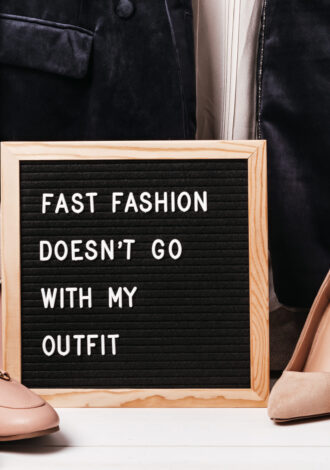As founder of the Boston-based Follain, a clean beauty retail destination with locations in New York City, Dallas and Seattle, Tara Foley has amassed a treasure trove of knowledge on skin care. She’s dedicated to sharing that knowledge by guiding consumers on how to make intentional choices on the products they use on their faces and bodies.
Foley opened the first Follain location in Boston’s South End neighborhood in 2013 after earning her MBA at Babson College and spending some time working on a lavender farm in France. Before this, she worked for a law firm in New York City, but her quest for living healthy in all aspects of life led her on a completely different career path.
Informed by research and a health advisory board of scientists and dermatologists, Foley’s Follain aims to educate customers on the dangers of an unregulated beauty industry and to provide clean product alternatives in a transparent and ethical way. With this mission in mind, Foley answered some of our most burning beauty questions.
Exhale: What common toxic ingredients should consumers avoid in their beauty products?
Tara Foley: It’s so important to read your beauty ingredient labels, because there is no regulation of the beauty industry in the U.S. This means beauty companies often can (and do) include unhealthy ingredients in the items you use every day. To make things really simple, we share our full list of banned ingredients publicly on our website for easy reference. If you’re starting to dip your toes into the world of clean beauty, some of the most important groups of ingredients to avoid are:
- SLS (Sodium Lauryl Sulfate)
- Aluminum zirconium
- Synthetic fragrance
- Parabens
- Mercury
- Hydroquinone
- Mineral Oil or Petrolatum
How can Follain customers begin to decipher product labels?
Unfortunately, some brands try to capitalize on the clean beauty movement by labeling their products with words like clean, non-toxic and natural, or by putting a leaf on the package. But, when you take a closer look at the label, you’ll find some nasty ingredients that certainly don’t live up to our standards at Follain.
There is no government or third party-certified definition stating what qualifies as “clean” beauty and skin care. The same goes for words like natural, non-toxic and green. Some brands even use the phrase “chemical-free” as if that’s an indicator of safety, but remember: Not all chemicals are bad. Even water is a chemical!
Because there’s no universal standard, it’s up to the companies to determine their own definition of clean. When I founded Follain, it was important for me to translate my beliefs into transparent, well-defined company standards. Here’s what clean means to us: Clean beauty prioritizes human and environmental health, featuring nutrient-dense ingredients as much as possible, and safe synthetics where they are absolutely necessary for preservation or performance.
What health effects have been linked to “dirty” product ingredients?
I always recommend avoiding products with parabens. These are antimicrobial agents added to personal care products to delay decomposition. They can be found in all types of hair products, from shampoo to deep conditioner, and more. Parabens have been linked to various long-term illnesses due to their potential developmental, reproductive and immune toxicity. They can also pose a threat to the endocrine system (AKA, your hormones).
Aluminum zirconium is another huge issue in conventional beauty products — specifically, deodorants. Switching out antiperspirant for a clean deodorant is one of the most important swaps we recommend to shoppers who are looking to start their clean beauty journey. Ironically, antiperspirants with aluminum zirconium can also trigger more sweat, because our bodies go into overdrive trying to push out toxins through blocked-up sweat glands.
Many scientific studies suggest a link between aluminum and breast cancer, endocrine disruption and even Alzheimer’s disease, which raises a concern about where these metals go once applied to the body. Not to mention, aluminum-based antiperspirants are applied extremely close to breast tissue and long-term effects of dermal absorption in relation to breast cancer are little known.
Is it more expensive for the consumer to switch to clean beauty products?
We strive to offer a variety of price points to make clean, effective beauty accessible for everyone. It’s also good to remember you don’t need to switch your routine all at once! Any step you take toward healthier products is a step in the right direction, so I recommend that you start with the products you use most and the ones that sit on your skin the longest such as moisturizers, deodorant and makeup.
Alternately, another way to get started is to switch over a step of your routine each time one of your conventional products runs out. Or, switch to one of our trial kits, to start.
Are there certain skin types who might not benefit from all-natural beauty products?
Clean beauty has come such a long way since the industry first took off — there are now so many wonderful, efficacious brands out there tailored to each and every skin type. In fact, many of the most powerful clean and nourishing ingredients are found in nature, such as:
- Rose hip seed oil to rejuvenate and brighten skin
- Manuka honey for cleansing, while also calming redness and inflammation
- Seaweed for hydrating and firming
- Activated charcoal and clays for drawing out toxins
All that to say, there is something for everyone!
What is your number one piece of beauty advice?
Concentrate your efforts and spending on your overnight routine. Your skin repairs itself while you sleep, and this is when products can really penetrate and work their magic.



 4 min read
4 min read

